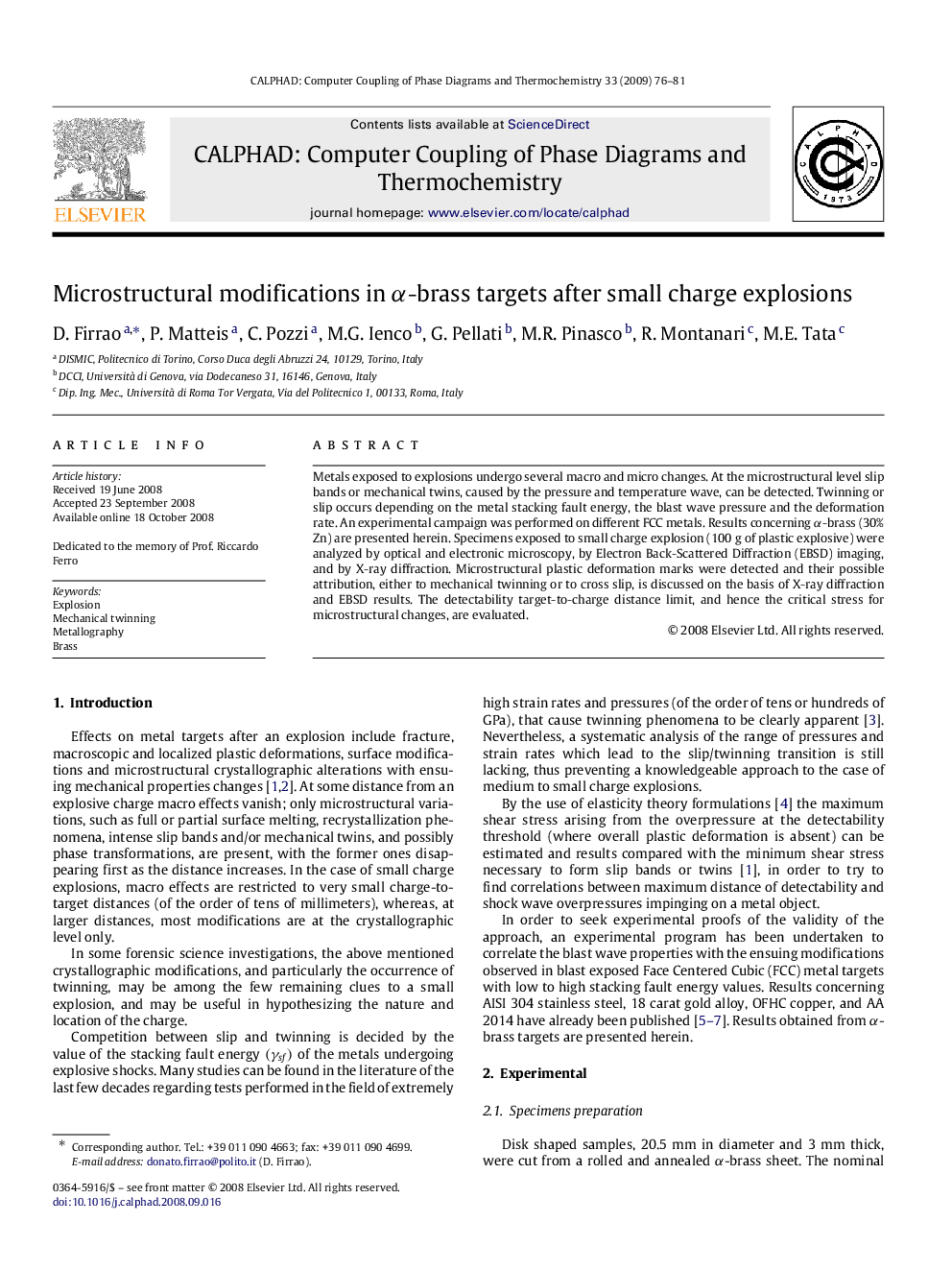| Article ID | Journal | Published Year | Pages | File Type |
|---|---|---|---|---|
| 1559146 | Calphad | 2009 | 6 Pages |
Abstract
Metals exposed to explosions undergo several macro and micro changes. At the microstructural level slip bands or mechanical twins, caused by the pressure and temperature wave, can be detected. Twinning or slip occurs depending on the metal stacking fault energy, the blast wave pressure and the deformation rate. An experimental campaign was performed on different FCC metals. Results concerning α-brass (30% Zn) are presented herein. Specimens exposed to small charge explosion (100 g of plastic explosive) were analyzed by optical and electronic microscopy, by Electron Back-Scattered Diffraction (EBSD) imaging, and by X-ray diffraction. Microstructural plastic deformation marks were detected and their possible attribution, either to mechanical twinning or to cross slip, is discussed on the basis of X-ray diffraction and EBSD results. The detectability target-to-charge distance limit, and hence the critical stress for microstructural changes, are evaluated.
Related Topics
Physical Sciences and Engineering
Materials Science
Materials Science (General)
Authors
D. Firrao, P. Matteis, C. Pozzi, M.G. Ienco, G. Pellati, M.R. Pinasco, R. Montanari, M.E. Tata,
